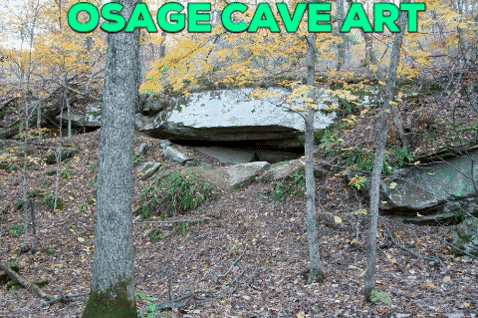
This week, a cave in Missouri containing prehistoric illustrations by members of the Osage Nation was auctioned in a single-lot sale for $2 million, or $2.2 million with premium.
Once used for burials and sacred rituals, the historic site—commonly called the Picture Cave—is home to some 290 glyphs more than 1,000 years old. It is considered among the most important examples of rock art in North America.
The tribe, which had previously tried to purchase the landmark, categorized the sale as “truly heartbreaking” in a statement. “Our ancestors lived in this area for 1,300 years,” their message read. “This was our land. We have hundreds of thousands of our ancestors buried throughout Missouri and Illinois, including Picture Cave.”
The lot was consigned by a family who had owned the property since 1953 and primarily used it for hunting. They approached Selkirk Auctioneers & Appraisers, the St. Louis-based firm responsible for the sale on September 14, after negotiations with the Osage Nation fell through.
Bryan Laughlin, Selkirk’s director, told CNN that the sellers originally had the 43-acre parcel appraised at between $420,000 and $450,000. His company, meanwhile, estimated that it could fetch between $1 million and $3 million at auction. In its listing, the auction house called the cave the “largest collection of Native American polychrome paintings in Missouri.”
“To me, it was just mind-boggling how they wouldn’t be able to realize that the significance and the historical intrinsic value would make it so much greater than just the acreage times a certain number,” Laughlin said.
The director suggested that the cave would remain untouched, noting that Selkirk vetted potential buyers and that Missouri has in place a statute making it a felony to disturb a human burial site.
“Regarding time and unforeseen occurrence, I cannot say, but all indications thus far would be that the cave is going to be preserved very well,” he added.
Primitive drawings of people, animals, and mythical creatures line the walls of Picture Cave, most made with charred plant material. Carol Diaz-Granados, an anthropologist at Washington University in St. Louis who co-wrote a book on the cave with her husband, told the AP that the detail of the drawings is what sets the site apart from others. “You get stick figures in other rock art sites, or maybe one little feather on the top of the head, or a figure holding a weapon,” she said. “But in Picture Cave you get actual clothing details, headdress details, feathers, weapons. It’s truly amazing.”
Diaz-Granados said auctioning off the landmark is “like auctioning off the Sistine Chapel.” She believes it should be returned to the Osage people. “That’s their cave,” she said. “That’s their sacred shrine, and it should go back to them.”

